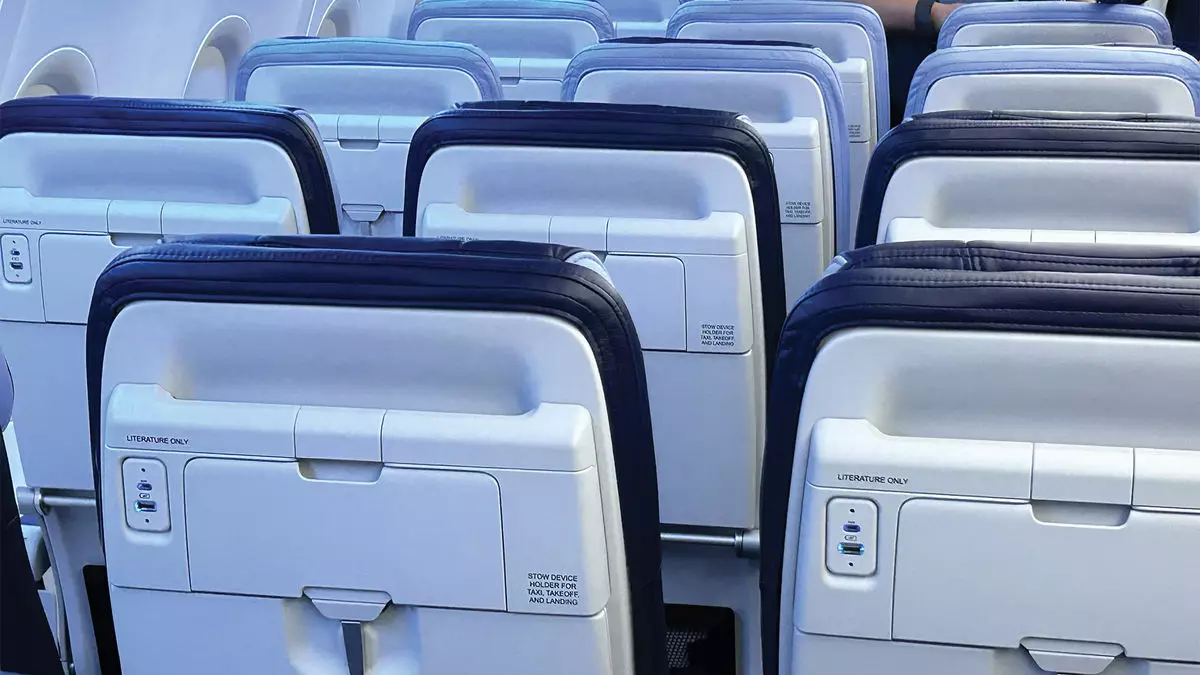Southwest Airlines, a significant player in the low-cost airline industry, is embarking on a significant overhaul of its aircraft, introducing extra-legroom seating as part of a broader transformation strategy. This move has been met with anticipation, yet it carries implications for both passengers and the airline itself. Initially, the airline had intended to roll out these changes as early as March 2025, however, it has since adjusted its timeline, pushing the reconfiguration efforts to the middle of 2025. This delay has drawn attention as it raises questions about Southwest’s operational efficiency and readiness for what is perceived as a critical enhancement to its service offerings.
The planned reconfiguration will introduce extra-legroom seats to approximately one-third of Southwest’s aircraft fleet, designed to provide passengers with 34 inches of leg space. While this enhancement is a welcomed feature, particularly for larger or taller passengers, it cannot be overlooked that to accommodate these additional seats, Southwest will reduce the standard legroom on its existing layout. Consequently, standard seats on the Boeing 737-8 models will see a one-inch reduction in space, bringing them down to 31 inches—an aspect that could displease frequent travelers accustomed to more room.
Moreover, adjusting seating configurations raises several questions about passenger comfort and satisfaction. While it is evident that introducing extra-legroom seats can attract a market segment willing to pay for additional comfort, existing passengers may not appreciate the trade-off of losing some of their personal space, especially on longer flights. Thus, the reconfiguration plans must be carefully managed to ensure that the operational goals do not come at the expense of customer experience.
In order to proceed with the new seating configurations, Southwest needs to secure two types of certifications from the Federal Aviation Administration (FAA). The anticipated weight and balance certification is expected in the first quarter of 2025, while the more complex Supplemental Type Certificate, which typically involves extensive paperwork and evaluation, is not expected until the second quarter. This two-tiered certification process may not only delay the rollout but also indicates a layer of complexity inherent in the airline’s operational changes.
Despite these challenges, Ryan Green, Southwest’s executive vice president of transformation, expressed a cautiously optimistic outlook about the transition. The airline’s ability to retrofit approximately 800 planes at a rate of 50 to 100 per month hinges not only on obtaining the necessary certifications but also on the logistics involved in the actual physical modifications to the aircraft. Should these processes be executed effectively, the airline will not only enhance its competitive edge but also improve passenger loyalty.
The financial implications of these operational changes are multifaceted. In the fourth quarter, Southwest reported a net income of $261 million, a notable turnaround from its previous year’s loss. With operating expenses dropping due to lower fuel prices, the airline appears to be on a stable financial footing. However, the overall income for 2024 was reported unchanged from the prior year, raising concerns about sustainable growth moving forward.
Looking ahead, Southwest’s revenue growth of 5.3% demonstrates an upward trend, but it also reveals the challenges of navigating an increasingly competitive market. CEO Bob Jordan’s prediction of margins increasing from 1.2% in 2024 to between 3% to 5% in 2025 is hopeful, but realization of these goals may require a seamless integration of new strategies and enhanced offerings.
Overall, Southwest Airlines stands at a critical juncture, where its decisions in the coming months will define its strategic direction and customer appeal. The introduction of extra-legroom seats can signify an important step toward modernization and responsiveness to passenger needs. However, the airline must balance these enhancements against the risk of alienating its existing customer base, complications presented by certification processes, and achieving sustained financial health. Ultimately, how effectively Southwest manages these changes will determine its success in an evolving airline market, demanding careful attention to both operational logistics and customer satisfaction.


Leave a Reply